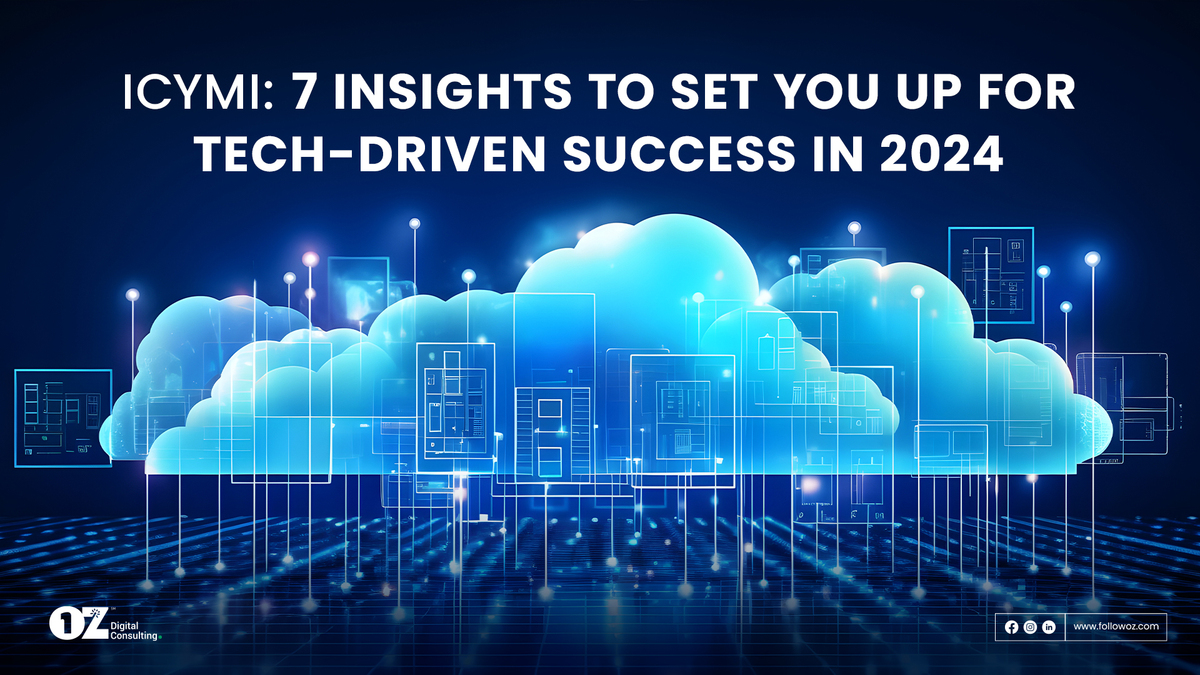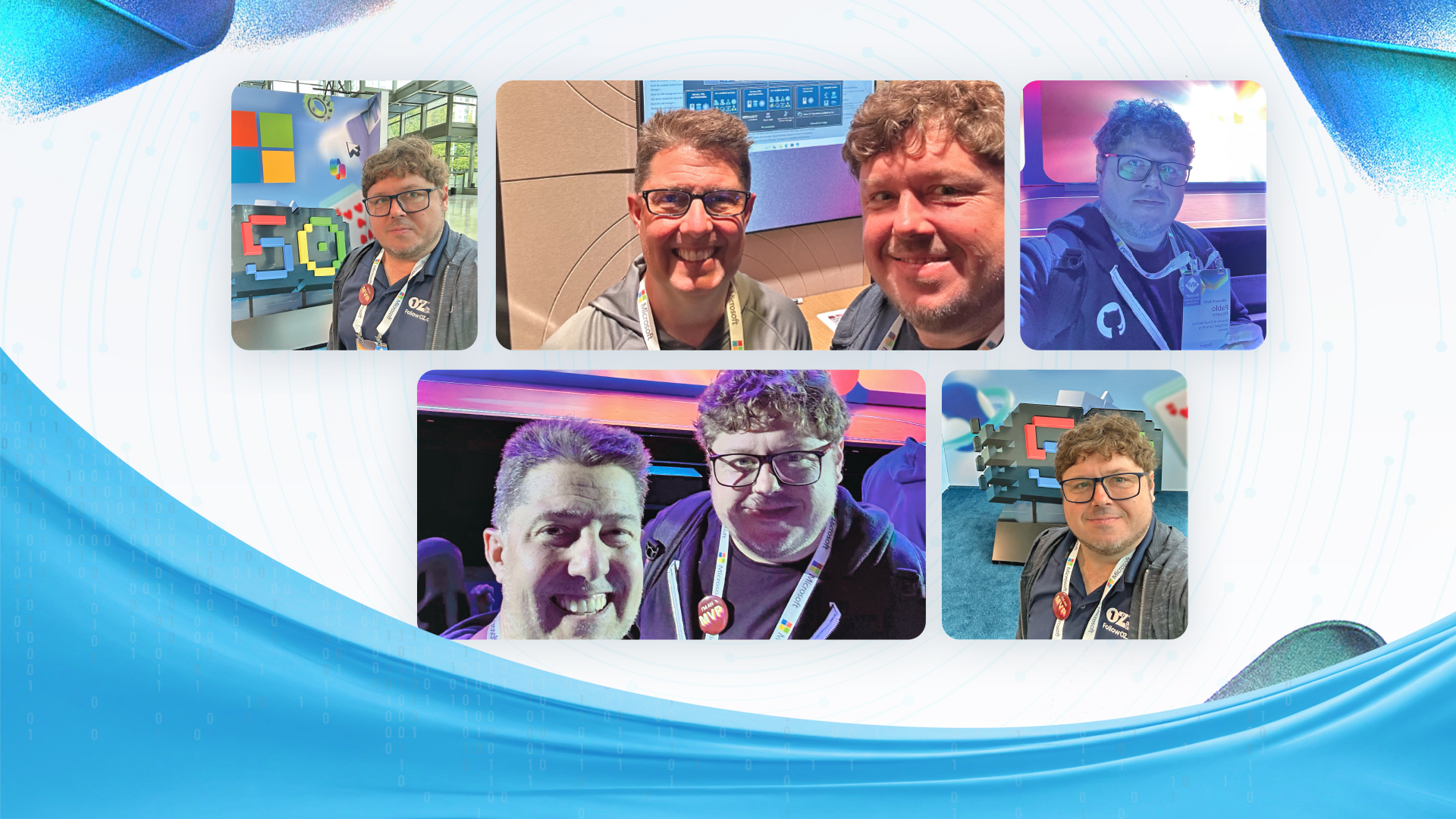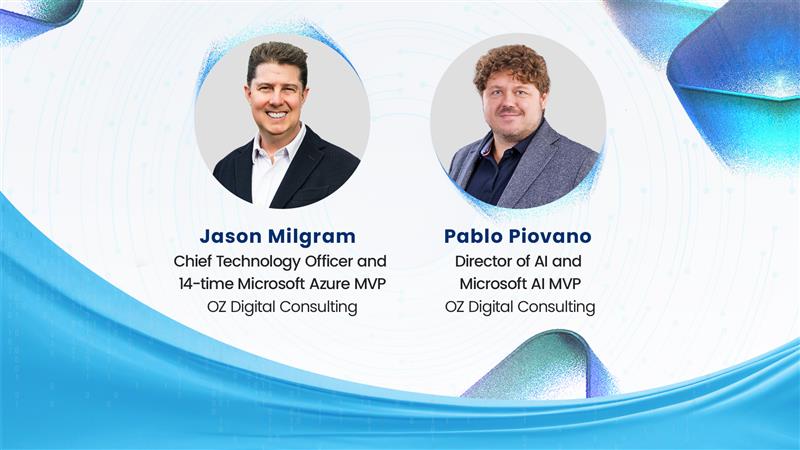The coming yet promises – yet again – to be one of unprecedented change and technological Business evolution.
To ensure you and your enterprise are prepared, OZ has collected seven of our most popular and forward-thinking blogs from 2023 below to get you positioned to leverage your strengths, minimize any weaknesses, overcome challenges, and make all your short- and long-term goals a reality.
Of course, for more specific questions and needs you can always schedule a consultation.
- Harnessing the Power of Web 3.0
“Looking ahead, Web 3.0 will continue to evolve as new technologies emerge that further enhance its capabilities,” OZ Chief Solutions Officer Manny Ramos writes. “It is important for businesses to understand how they can leverage these advancements now to stay competitive in today’s rapidly changing landscape. OZ offers a range of services designed specifically for this purpose—from enterprise integration solutions utilizing AI-driven analytics tools through cloud computing infrastructure development—enabling organizations across industries to unlock their full potential using cutting-edge web technologies like never before.”
- How to Leverage Intelligent Workflow Automation
“Intelligent Workflow Automation (IWA) is a process that utilizes software and algorithms to automate complex tasks that would otherwise require manual labor or human intervention. It enables businesses to streamline operations, reduce costs, and improve efficiency by automating repetitive processes such as data entry, customer service inquiries, or billing. IWA can be used for both simple and complex workflows across multiple departments within an organization.”
Learn more about getting started here.
- Everything You Ever Wanted to Know About Data Sharing…But Were Afraid to Ask
OZ SVP Sal Cardozo reveals the benefits of data sharing:
- The ability to generate new revenue streams. With data sharing, organizations can generate new revenue streams by offering data products or data services to their end consumers.
- Greater collaboration with existing partners.In today’s highly digital economy, successful enterprises are those that advance their business objectives through partnerships. Data sharing helps cement existing partnerships and establish new ones.
- Ease of producing new products, services, or business models.Product teams can leverage both first-party data and third-party data to refine their products and services and expand their product/service catalog.
- Greater efficiency of internal operations.Teams across the enterprise can meet their business goals far more quickly when they don’t have to spend time figuring out how to free data from silos. When teams have access to live data, there’s no lag time between the need for data and the connection with the appropriate data source.
- Powerful Strategic Frameworks: Empower Your Team for Success
“Almost ironically, a framework needs to incorporate not only the overall ethos of the organization unflinchingly but also flexibility—which is actually key,” OZ SVP Murray Izenwasser writes. “Flexibility needs to be incorporated into the model and the process. The framework needs to be adaptable, to reflect changes to the organization (such as an acquisition), changes to the strategic focus (pursuing new strategic directives or deciding to not pursue one that was previously part of the strategic plan), and changes to the industry (new technologies or competitors). And then to allow those changes to be quickly incorporated into the framework, allowing strategic initiatives to be re-evaluated against this new reality. This allows quick and objective re-evaluation of existing and new opportunities, and the possible redistribution of resources and change in direction across initiatives.”
- How the RPA Revolution is Transforming Healthcare
Think of the Robotic Process Automation (RPA) revolution as the rise of “software robots.”
These robots can not only reboot, mimic, and learn, but also perform rule-based processes and tasks.
Oh, and did we mention they perform these processes and tasks with more accuracy than people usually do, working around the clock and with one hundred percent precision?
- Why Innovation Fails (And How You Will Succeed)
While most companies want to innovate, only a few know how to innovate — in a systemic way. A culture of continuous innovation requires a steady stream of ideas. Ideas you can filter, test, and implement quickly and efficiently.
However, in the real world, innovation is often treated like a project, not a process.
Often the ideas originate from a small group of people — usually senior leaders or the C-suite — and cascade down to the rest of the organization. Many leaders believe their employees will automatically rally behind the idea, do whatever it takes, and push it over the finish line.
But it just doesn’t happen that way.
Here’s how to thread the innovation needle.
- APIs vs Microservices: Key Differences Every Developer (and Business) Should Know
“We’re connected to the world — and each other — like never before,” OZ Vice President of Automation & Enterprise Integration Imran Sabir writes. “But have you stopped to ask what makes it possible? What goes on behind the scenes, allowing us to do many things simultaneously? How do we book a flight, check-in online, and arrive at our destination with just a few clicks?”
So, how does data travel, and how do all these different devices and applications connect with each other?
The Application Programming Interface or API is what makes this connectivity — we take for granted — happen.
In this business environment it’s important to break down what APIs and Microservices are, why they’re different, and how they play a central part in everything we do — from shopping online to hailing a cab in the dead of night.
Find out now.
Your Next Steps
For more information, please visit our constantly updated blog, check out our collection of case studies, or visit our library of free e-Books.



